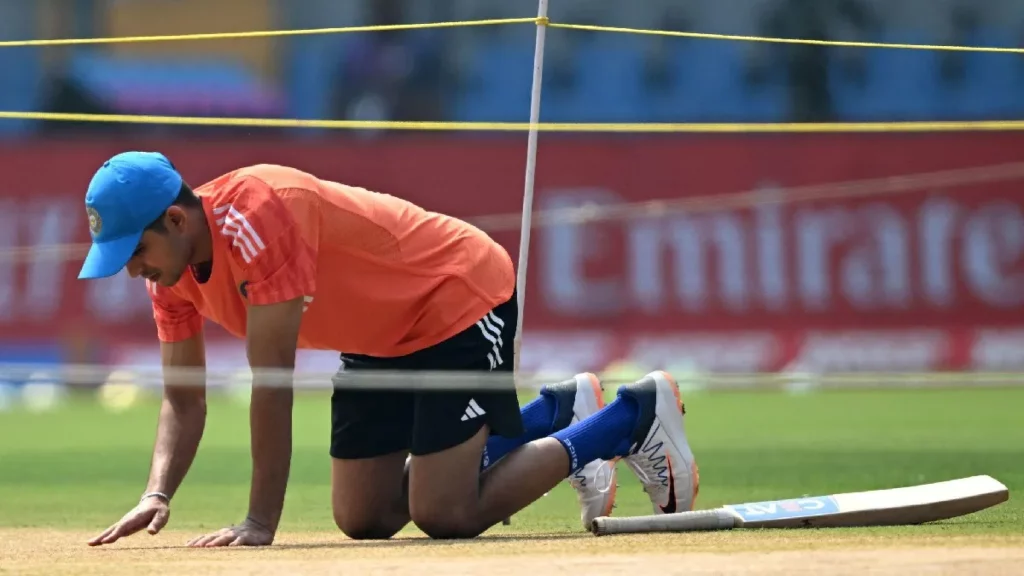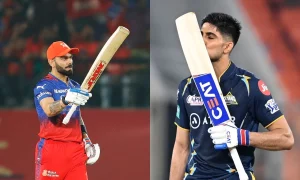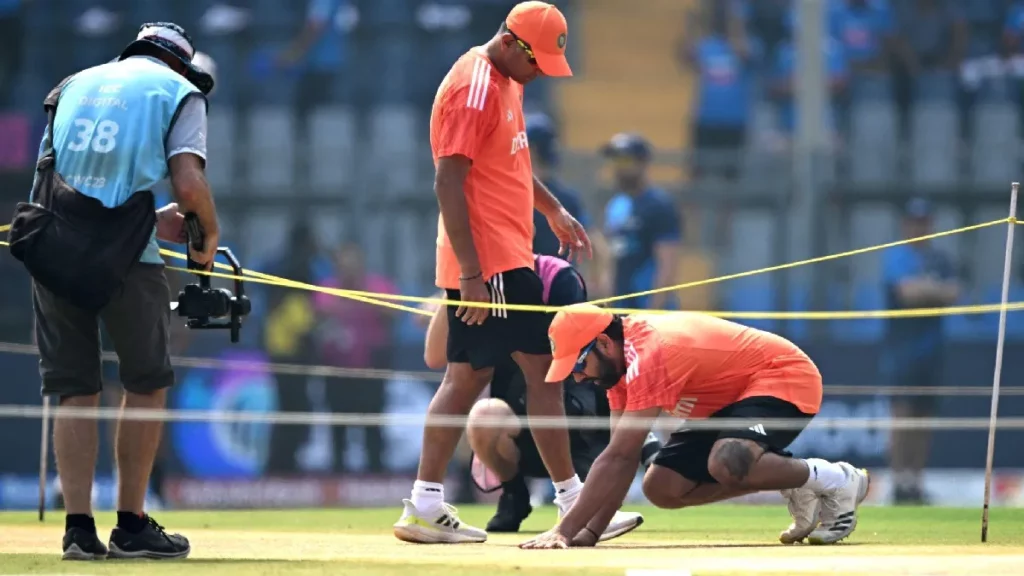The first semi-final of the ICC ODI World Cup between team India and New Zeeland is underway at Wankhede Stadium in Mumbai today, 15th November.
The Men of Blue were the top side on the points table after a perfect record of nine wins out of nine matches. However, their opponents stumbled in the middle of the tournament, finished at fourth place, and qualified for the semi-finals. However, the Kiwis always hold the edge against India during ICC games taking nine out of thirteen such contests.
In a similar first vs fourth semi-final game of the 2019 ODI World Cup in Manchester, the Kiwis scored a surprise upset against the much-fancied Indian squad.
However, the hosts won by four wickets in the league stage of the 2023 ODI World Cup game between the teams in Dharamsala.
Meanwhile, the Wankhede wicket has been a source of contention during the build-up to this match. Similarly, in previous World Cups, there have been situations where debates over the pitch grabbed center stage.
Consider the three situations in which pitch conditions sparked criticism during a World Cup match.
1. India vs New Zealand – 2023 World Cup semi-final

Thus, in the run up to the India vs New Zealand semi final of the 2023 world cup controversy surround the pitch. Pitch 7 is the center of Wankhede Stadium and it was where the match was initially scheduled.
However, a last-minute decision was made to move the game to the sixth pitch, which had previously held two matches: South Africa vs. England and India vs. Sri Lanka.
The modification is a last-minute departure from the pitch allocation completed before to the commencement of the 2023 World Cup. According to sources, the scheduled rotation at Wankhede was 6-8-6-8-7, and 6-8-6-8 has been implemented so far with Pitch 7 being the last game (semi-final) in Mumbai.
According to reports, the Indian team management sought a slower surface in the first semi-final to better fit the squad. Although the BCCI has been accused of doctoring pitches in an ICC tournament, the World Cup’s playing conditions specify that it is entirely within the regulations.
It reads:
“The relevant ‘ground authority’ is “responsible for the selection and preparation of the pitch” before any given match – in this case, the Mumbai Cricket Association (MCA).”
However, the ICC’s independent pitch expert, Andy Atkinson, is said to be irritated by alterations to pre-agreed-upon plans during the World Cup. It remains to be seen whether a similar adjustment in the strip would occur if India makes the final in Ahmedabad.
2 Pakistan vs Zimbabwe – 2015 World Cup
Former Pakistan bowler Sarfraz Nawaz made waves during the 2015 World Cup in Australia and New Zealand by claiming that the surfaces were designed specifically for the Indian squad.
His comments came after Pakistan overcame Zimbabwe by 20 runs on a two-paced surface at Brisbane’s Gabba. Meanwhile, India is now playing Pakistan, Australia, and the UAE on three batting-friendly pitches in Adelaide, Melbourne, and Perth.
Sarfraz stated on a TV Channel broadcast following the Pakistan-Zimbabwe clash:
“You look at the matches played so far in this World Cup that where India has played the pitches have been prepared to suit their strengths. Look at today’s match [ Pak-Zim], the pitch was double paced and had lot of bounce which goes against our strengths. I would ask Pakistan Cricket Board to take up this issue with the ICC and find out what is going on.”
Sarfraz Nawaz
India trounced Pakistan by 76 runs in their respective tournament openers at the Adelaide Oval. While the ICC did not take up the issue, it sparked a debate between experts and fans of the opposing countries.
In the end, however, all sides lost in the cup’s knockout stages. In the semi-final India lost to Australia and, similarly, Pakistan was defeated by this team during the quarter-final.
3 India vs New Zealand – 2019 World Cup
The pitches of the 2019 ODI World Cup were heavily criticized for being drastically different from those seen in England.
The outrage grew when India was defeated by New Zealand by 18 runs in a low-scoring semi-final in Manchester. Despite needing only 240 to win, Team India was bowled out for 221 on a sloppy surface.
Unlike the high-scoring fields that preceded the event in England, the World Cup featured some low-scoring games, much to the chagrin of spectators, analysts, and even participating players.
However, the ICC denied giving local groundsmen orders to prepare slower wickets than normal.
“Essentially the venues are responsible for the pitch preparation which is done with oversight and guidance from the ICC and our independent pitch consultant.”
“The guidance we give any host of an ICC event is to prepare the best possible pitches for the conditions in that country – so in this case the best possible ODI pitch for typical English conditions and we would also look for even bounce and good carry. The ICC does not instruct groundsmen to prepare pitches in a certain way to advantage, or disadvantage, any team.”
ICC Official
The grand finals was again a low-scoring affair, with England and New Zealand tying with 241 points apiece.
Jonny Bairstow, England’s wicketkeeper-batsman, and pundit Mark Butcher were among those who questioned the quality of the pitches for the home World Cup.




